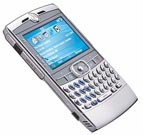Mobile phones’ radiations can distort results of tested measuring systems
 Washington, September 18: Radiations emitting from mobile phones can distort measurements taken via the latest measuring systems, even when their individual components have passed the standardized Electromagnetic Compatibility Test (EMC).
Washington, September 18: Radiations emitting from mobile phones can distort measurements taken via the latest measuring systems, even when their individual components have passed the standardized Electromagnetic Compatibility Test (EMC).
Researchers at the Physikalisch-Technische Bundesanstalt (PTB) say that this is the reason why the verification of vehicle scales that are used to weigh trains, lorries or cars are rejected by the concerned authorities in certain cases.
The awareness that the interference resistance of measuring systems is very decisively dependent on the configuration, and the installation on site has not been sufficiently taken into account in the normative requirements.
The discrepancy is based on the fact that the European testing requirements worked out several years ago do not sufficiently take into account the actual present-day disturbance source situation due to the spread of radio receivers and mobile telephones.
It was due to this technical requirement and possible political consequences that a revision of the respective standards was initiated, with the PTB participating in it.
For the determination of new normative limiting values and assessment of the interference resistance of measuring devices on site by the verification authorities, metrologically traceable EMC tests on site are necessary, for which there has not been a measuring device available up to now.
It was for that reason that the PTB developed a transportable testing device, which enables testing at discrete frequencies between 27 MHz and 5.8 GHz.
The frequencies were selected such that the real disturbance sources are displayed, and the disturbance of radio services is avoided.
The frequencies of the testing device lie in the vicinity of the frequency bands of classical means of communication like company radio and amateur radio, but also in the vicinity of the frequency ranges of modern communications systems such as GSM, DECT, UMTS, Bluetooth and WLAN.
In the test operation on site, the critical parts of the measuring system can at a distance of 1 m from the transmitting antenna be charged with the electromagnetic field successively for 1 min in each case for each single frequency, and thereby the correct function of the measuring system be assessed.
By means of a suitable design and software user guidance, the presence of an expert in high frequency engineering is not necessary for the operation of the testing device on site. (ANI)